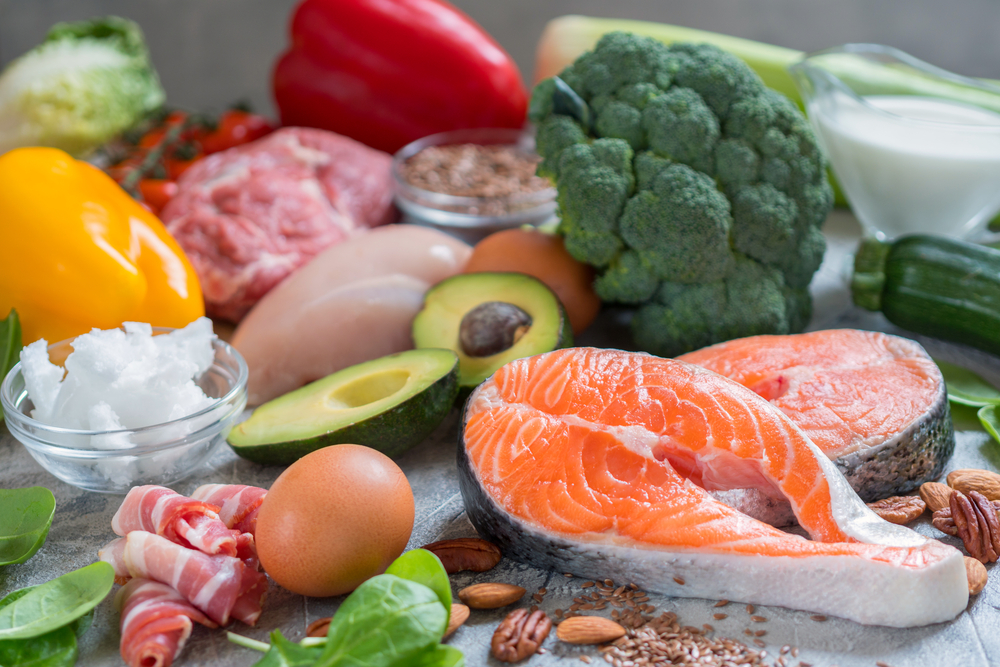A recent survey of registered dietitians named the low-carbohydrate keto diet yet again as the most popular diet in the US. Powering this diet is fat, and loads of it — up to a hefty 90 per cent of one’s daily calories.
Its fans feed social media with before and after photos, crediting the diet for life-altering weight loss or other effects. They swirl butter into their coffee, load up on cheese and eat lonely burgers without its bestie, the bun.
The diet is hailed for dropping pounds, burning more calories, reducing hunger, managing diabetes, treating drug resistant epilepsy, improving blood pressure and cholesterol, as well as triglycerides, the major storage form of fat in the body. People have reported improved concentration, too.
What is a keto diet?
A “typical” ketogenic diet consists of at least 70 per cent of calories derived from fat, less than 10 per cent from carbs and less than 20 per cent from protein. That can mean chowing down on a lot of cheese, butter, eggs, nuts, salmon, bacon, olive oil, and non-starchy vegetables such as broccoli, cauliflower, greens and spinach. The keto diet is vastly different from the USDA dietary recommendations of 45 to 65 per cent of total calories to be from carbohydrates, 20 to 35 per cent from fat, and 10 to 35 per cent from protein.
The goal of the ketogenic diet is to enter a state of ketosis through fat metabolism. In a ketogenic state, the body uses primarily fat for energy instead of carbohydrates; with low levels of carbohydrate, fats can be converted into ketones to fuel the body.
For ketosis, a typical adult must consume less than 20 to 50 grams of net carbohydrates — total carbs minus fibre — each day. Crossing that threshold is easy: a thick slice of bread adds 21 carbohydrates, a medium apple 25, and a cup of milk 12. It’s not just bread and soda that are on the outs but high sugar fruit and starchy veggies like potatoes, as well as too much protein.
There are many ways to interpret the keto diet. Some people eat a salad with chicken, dressed in olive oil, while others feast on bacon washed down by diet soda, the kind of diet known as “dirty keto”. That’s eating anything, including processed foods, as long as your carbs are low enough and your fat high enough to achieve ketosis. The best diet is one that works for you, but if you want to try this, avoid trans fats such as margarine and limit saturated fat by consuming lean cuts of beef, skinless chicken breast and fatty fish like salmon. Reach for foods high in unsaturated fats such as avocado, nuts, seeds and olive oil.
Christopher Gardner, the lead author and a professor of medicine and nutrition scientist at Stanford Prevention Research Center, US, also says he sees one common misconception about keto: eating too much protein. Most amino acids in protein foods can be converted into glucose in the body, undermining efforts to keep carb intake low. “It drives me nuts that people don’t get it,” he said when he sees people eat, for instance, steak after steak.
Can I lose weight on it?
For the first two to six months, there’s evidence that a very low carbohydrate diet can help you lose more weight than the standard high carbohydrate, low fat diet, according to a new literature review of low-carb diets by the National Lipid Association.
“By 12 months, that advantage is essentially gone,” said Carol F. Kirkpatrick, director of US’s Idaho State University’s Wellness Center, and lead author of the new literature review. She said keto is best used to kick start a diet, before transitioning to a carb intake that you can adhere to for the longer term.
How long to see results?
For some, it’s the promised land of diets. Instead of cringing through carrot sticks, they can fill up on chorizo with scrambled eggs. Indeed, some evidence suggests that people feel less hungry while in ketosis, and have fewer cravings.
“That’s why it’s become so popular for the general population,” said Dr Mackenzie C. Cervenka, medical director of Johns Hopkins Hospital’s Adult Epilepsy Diet Center in the US. “Because once you are in ketosis, it’s easy to follow.” Usually, it takes between one to four days to enter the state, doctors say, but it depends on many factors like activity level: a runner, for example, may sprint there faster than a couch potato.
The keto diet appears to deliver fast results: The first pounds seem to slip off. That can be seductive but it’s likely water weight. Then, dietitians say, it’s back to energy in minus energy out. You can gain weight on any diet if you’re consuming 5,000 calories a day, according to Whitney Linsenmeyer, director of Saint Louis University’s Didactic Program in Dietetics.
“It’s not like it is going to magically alter your metabolism to where calories don’t matter,” she said. And when resuming the carbs, that water weight returns.
Does it help with diabetes?
Yes. “Carbohydrate is the biggest driver of blood sugar,” said Dr William Yancy, director of the Duke Diet and Fitness Center, who sees a lot of promise in the diet helping those with diabetes.
A new randomised clinical trial enrolled 263 adults with type 2 diabetes into group medical visits, with half receiving medication adjustment for better blood sugar control, and the others undergoing weight management counselling using a low carb diet. (All participants of the study had a BMI that fell within the range of overweight or obese.)
Both groups experienced lowered average blood sugar levels at the end of 48 weeks, according to findings in the Journal of the American Medical Association Internal Medicine. However, the weight management group on the low carb diet slimmed down more, required less medication and had fewer problematic low blood sugar episodes.
For those with type 2 diabetes, a low carb diet seems to improve average blood sugar levels better in the first year than the high carbohydrate, low fat diet. After that time, the review by the US National Lipid Association found that difference almost disappears — but with a very important benefit: the low carb participants were able to use less medication. “People like that because they don’t like to be on diabetes medicines,” Dr Yancy said.
Are there side effects?
At first some can experience some stomach issues and GI distress. “Ninety percent of calories from fat is probably going to be a shock to the system,” said Linsenmeyer.
It’s crucial, doctors say, to consult with a dietitian or physician, have cholesterol levels checked, and replenish the fluids and sodium lost by increased urination and the severe restriction of carbohydrates. If not, within two to four days of beginning the diet, that depletion may bring on “keto flu” — dizziness, poor sleep and fatigue.
“Carbohydrates have a lot of nutrients that can help us maintain our body function,” said Carla Prado, director of the University of Alberta’s Human Nutrition Research Unit, US. Some people experience “keto breath”, a halitosis likely caused by the production of acetone, one of the ketone bodies.
Possible side effects for patients with epilepsy starting the diet include constipation, vomiting, fatigue, hypoglycemia, worsening reflux and increased frequency of seizures. The US National Lipid Association review urges patients with lipid disorders (high cholesterol or triglycerides), a history of atherosclerotic cardiovascular disease (such as a heart attack or stroke), heart failure and kidney and liver disease to take caution if considering the diet. People on blood thinners should take extra care.
Whichever eating plan one chooses for 2020, certain recommendations are nearly universal: cut down on refined carbs and ultra-processed foods, and consume more whole foods, particularly non-starchy vegetables, such as broccoli, asparagus, and spinach.
“The ‘optimal diet’ lies somewhere between what has been proposed historically — the high carbohydrate, low fat diet — and the ketogenic diet,” said Dr Cervenka.










